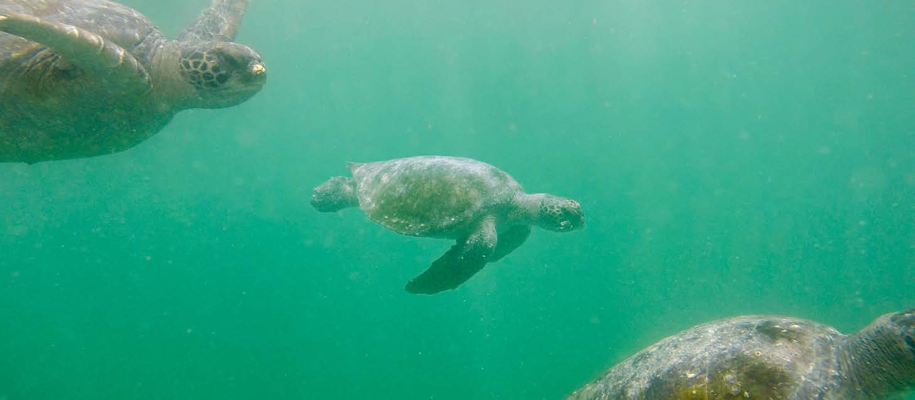Did you know that September is National Wilderness Month? In 2013, former President Barack Obama declared this month to be dedicated to the preservation and appreciation of native species within the US and North America. No matter the time of year, we should all try to take small steps toward conserving the ecosystem right here in our own country. How do we do that, you may ask? By learning about the creatures that need our help the most and what we can do to save them!
4 of North America’s most endangered species
Many animals are at risk of disappearing forever in North America, a continent with diverse landscapes like mountains and plains. Humans, pollution, and climate change are all reasons why these creatures are in danger. Even though people are trying to help, many iconic animals are still in trouble. Let's take a look at just four of them:
1. California condor
The California condor is a magnificent species of bird, identifiable by the triangular white patch on its eight- to nine-foot wingspan. Condors are incredibly social birds and typically mate for life. They prefer to nest on high cliff faces and feed off carrion, or deceased prey. Sadly, these impressive fliers neared extinction in 1982, when only 22 condors remained in the wild. Thankfully, with the help of a special breeding program at the San Diego Zoo, condor populations rose to almost 200 birds by the early 2000s. According to the US Fish and Wildlife Service, the population reached a total of 561 condors in 2022. The wild population, however, is still nowhere near stable, as their habitats are threatened by electric windmills, power lines, and lead poisoning caused by the ingestion of prey wounded by bullets.
2. Green sea turtle
Green sea turtles, or honu as they are called on the Hawaiian Islands, are native to both the Pacific and Atlantic Oceans. Adult turtles can reach up to five feet in length and typically feed on kelp and algae throughout their century-long lifetimes. Green sea turtles are one of the most endangered sea turtles in North America, along with Kemp’s ridley sea turtles. New hatchlings that follow the reflection of the moon off the ocean are often confused by the lights of nearby beach houses. The adults that do survive the perils of sea turtle childhood risk the dangers of being hunted for their eggs, meat, and shells; fatally wounded by boat propellers; or suffocated by fishing nets.
3. Red wolf
A smaller version of the grey wolf, the red wolf wanders the forests of eastern North Carolina in close-knit family packs. Red wolf coats are usually brown or pale yellow, with reddish tints around the ears and muzzle. Like the California condor, the red wolf was declared extinct in the wild after its population dwindled down to just 14 remaining wolves. The US Fish and Wildlife Service began a captive breeding program with these 14 canines and was able to successfully release multiple generations of new, healthy wolves. Just 15–17 red wolves roam the forests of North Carolina today. Unfortunately, illegal hunting of these beautiful canines has become a growing problem, with detrimental effects on the fragile population in the wild.
4. Staghorn coral
Lots of people love the ocean, but the majority of beach-goers tend to overlook one of the most important organisms within the underwater ecosystem (which is indeed an animal, not a plant): coral! Staghorn coral gets its name from its unique shape, which resembles male deer antlers. This species of coral can be found off the western coast of Florida and throughout the Caribbean and can grow in depths ranging from one to 100 feet, depending on sediment stability and light availability. Like corals all over the globe, staghorn coral is prone to disease and bleaching caused by warmer water temperatures. Natural disasters, like hurricanes, and human influence continue to disrupt their delicate ecosystem.
Related: Finding a Great Animal Science College and Career
4 ways students can help
It may not seem like it, but as students, we have the power to make a positive impact on the conservation of endangered species. By taking small yet significant steps, we can contribute to the protection of wildlife and their habitats. Here are four easy things you can do to help.
1. Learn about wildlife
The easiest way to help endangered species is to learn about the animals that are most vulnerable within your area. Are there any state parks or reservations near your school or campus? Are there any endangered animals or species of concern within your region? Learning these facts will help you become more aware of the ecosystem in your own backyard. Then you can take all of your newfound knowledge and spread it around your community! This could be as small as letting your friend know that the Eastern box turtle she found in her backyard is actually a vulnerable species or as large as forming a community conservation project. The more we know about why conservation is important, the more we can focus on how best to preserve the environment.
2. Buy sustainable products and recycle
As a student, it can be harder to buy sustainable products since they are generally more expensive than those that are mass-produced. However, there are still small steps you can take to help endangered species across the globe. For example, recycle your cell phone, even if it’s broken. Coltan, a reusable mineral in cell phones, is mined from gorilla habitats, and by recycling old phones, you reduce the need to deplete these rainforests further. Try to reduce your usage of palm oil—in products like shampoo, lip balm, and makeup—since its extraction is also detrimental to plants and animals in Malaysia and Indonesia. Recycle cardboard, soda cans, and paper. Try to take your notes electronically instead of writing them in notebooks (additional perk: this means less stuff to carry in your backpack).
3. Support national and state parks
National and state parks are important havens for endangered species, where populations can live and grow without the threat of humans. You can support national parks by making a small donation. Or since we all know that students are more than a little broke, you could just visit a park or volunteer your time. Parks and the ecosystems within them can’t continue to function without visitor support. Plus, it’s a perfect excuse to visit some of the most beautiful areas of our country, and some may offer student discounts!
4. Use fewer plastic products
The easiest way to help ocean life, like adorable little green sea turtles, is to use fewer plastic products. Things like shopping bags and plastic water bottles often end up floating throughout the sea, suffocating unsuspecting marine creatures. When you can, try to use reusable bags at the grocery store (added bonus: they break less easily), and cut up six-pack soda rings so that they can’t choke sea life.
Related: Top 5 Ways to Be Green and More Sustainable on Your Campus
Helping to save species in North America and around the globe can be as simple as recycling your Redbull cans from late-night cram sessions or organizing a community-wide river cleanup. No matter how small, every act is a step closer to preserving our beautiful Earth for future generations to enjoy!
Wondering what else you can do to save the sea turtles? (Sorry—they're just so cute!) Learn how to change your daily habits for the better with 7 Personal Goals to Make a Real Environmental Impact.




